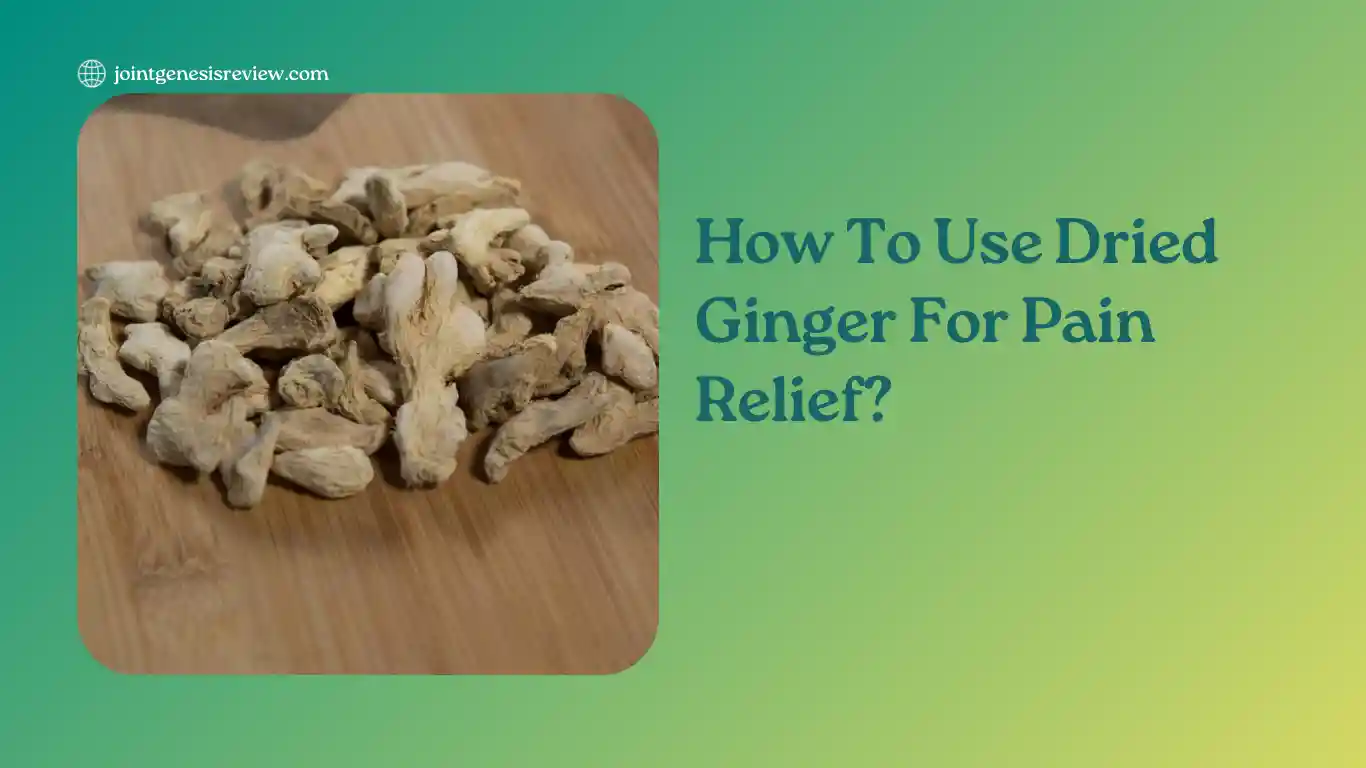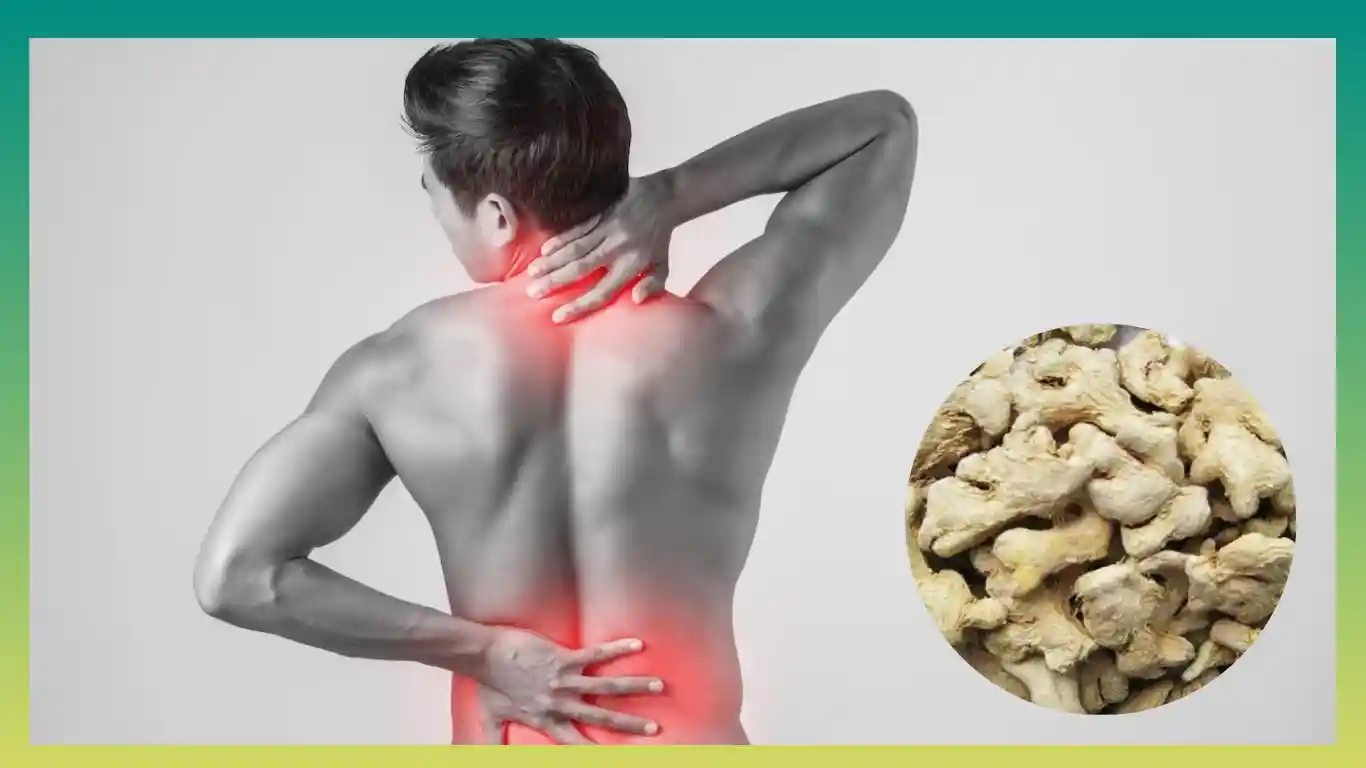How To Use Dried Ginger For Pain Relief? Check It Out!
Unlock the power of dried ginger for pain relief with our comprehensive guide. Learn effective methods and tips for incorporating this natural remedy into your daily routine. From soothing sore muscles to alleviating joint discomfort, discover how dried ginger can offer holistic relief for various types of pain. Whether you prefer brewing ginger tea, creating topical poultices, or adding it to your favorite recipes, explore the versatility and benefits of this ancient remedy. Don’t let pain hold you back – empower yourself with the knowledge of using dried ginger to promote overall well-being and enhance your quality of life.

Disclaimer: This article has been generated with the assistance of AI tools. While our research team has fact-checked the content, readers should independently verify information for accuracy and reliability.
Pain, whether chronic or acute, can significantly impact an individual’s quality of life. While conventional pain medications offer relief, many people seek natural alternatives to complement their treatment plans or minimize potential side effects.
One such natural remedy that has gained popularity is dried ginger, a versatile and flavorful root with potential analgesic (pain-relieving) properties. This article explores the use of dried ginger for pain relief, providing evidence-based information and practical tips for its preparation and consumption.
How To Prepare Dried Ginger For Pain Relief?

Before using dried ginger for pain relief, it’s essential to ensure that you have high-quality, unadulterated dried ginger. Here are the steps to prepare dried ginger:
- Sourcing: Purchase dried ginger from a reputable source or health food store to ensure quality and potency.
- Grinding: For optimal effectiveness, it’s recommended to grind the dried ginger into a powder using a spice grinder, coffee grinder, or mortar and pestle. The smaller particle size increases surface area, allowing for better extraction of the active compounds.
- Storage: Store the dried ginger in an airtight container, away from direct sunlight and moisture, to maintain its potency and freshness.
How To Eat Dried Ginger For Pain Relief?
One of the simplest ways to consume dried ginger for pain relief is to incorporate it into your diet. According to a study published in the Journal of Medicinal Food, ginger’s anti-inflammatory properties may help alleviate pain associated with conditions like osteoarthritis and rheumatoid arthritis. Here are some suggestions:
- Add to meals: Sprinkle ground dried ginger over soups, stews, stir-fries, or any savory dish for an added flavor boost and potential pain-relieving benefits.
- Ginger tea: Steep a teaspoon of dried ginger in hot water for 5-10 minutes to make a simple and soothing ginger tea.
- Ginger cookies or baked goods: Incorporate dried ginger into cookie doughs, bread mixes, or other baked goods for a warm and aromatic treat with potential analgesic properties.
How To Drink Dried Ginger For Pain Relief?
Drinking ginger in the form of tea or water infusions is another popular method for potentially alleviating pain. According to the Arthritis Foundation, ginger may help reduce inflammation and alleviate symptoms associated with various types of arthritis. Here are some preparation methods:
- Ginger tea: Steep a teaspoon of dried ginger in hot water for 5-10 minutes to make a simple and soothing ginger tea.
- Ginger water infusion: Add a teaspoon of ground dried ginger to a glass of warm or room temperature water, stir well, and let it steep for 5-10 minutes before drinking.
- Ginger shot: For a concentrated dose, mix a teaspoon of dried ginger with a small amount of warm water to create a potent ginger shot that can be consumed quickly.
The Best Time To Drink Dried Ginger For Pain Relief
While there is no definitive best time to consume dried ginger for pain relief, some experts suggest drinking ginger tea or infusions on an empty stomach, either in the morning or between meals. This practice is believed to enhance the absorption and bioavailability of the active compounds in ginger, potentially maximizing its potential pain-relieving effects.
Can Ginger Tea Be Used To Reduce Knee Pain?
Several studies have explored the potential benefits of ginger for alleviating knee pain associated with osteoarthritis. A 2015 study published in the Journal of Medicinal Food found that consuming ginger extract daily for 12 weeks significantly reduced knee pain and improved overall knee function in individuals with osteoarthritis, compared to a placebo group.
While this study focused on ginger extract supplementation, it is reasonable to believe that consuming ginger in the form of tea or infusions may also provide potential benefits for knee pain relief, although the effects may be less potent compared to concentrated extracts.
Pepper And Ginger For Pain Relief In 3 Days
Some traditional remedies suggest combining dried ginger with black pepper for enhanced pain-relieving effects. This combination is believed to work synergistically, as the piperine compound found in black pepper may increase the bioavailability and absorption of the active compounds in ginger, such as gingerols and shogaols.5
While anecdotal reports claim that this combination can provide noticeable pain relief within 3 days of consistent use, scientific evidence supporting this specific claim is limited. It’s important to consult with a healthcare professional before trying any new remedy, especially if you have underlying medical conditions or are taking medications.
Ginger Water For Pain Relief Results
While individual results may vary, many anecdotal reports and preliminary studies suggest that consuming ginger water or infusions can provide relief for various types of pain, including menstrual cramps, muscle aches, and joint pain. A review published in the Journal of Pain Research found that ginger may have potential benefits for reducing pain associated with osteoarthritis, rheumatoid arthritis, and muscle soreness.
However, it’s important to note that the scientific evidence supporting the use of ginger for pain relief is still inconclusive, and more research is needed to fully understand its mechanisms and efficacy.
Final Thoughts
Dried ginger offers a convenient and versatile option for incorporating this ancient remedy into your diet or pain management routine. While the scientific evidence supporting its use for pain relief is promising but limited, many individuals have reported positive experiences with consuming ginger in various forms.
If you decide to try dried ginger for pain relief, it’s essential to source high-quality products, follow proper preparation methods, and consult with a healthcare professional, especially if you have any underlying medical conditions or are taking medications.
Remember, while natural remedies like dried ginger can be beneficial, they should not be used as a substitute for professional medical advice or treatment, but rather as a complementary approach to a comprehensive pain management plan.
Footnotes
- Niazi, F., Zikria, J., Ansari, N., Pasha, U., Bano, S., Rashid, S., … & Imran, M. (2015). Ginger, an anti-inflammatory functional food in the prevention of ageing-associated chronic diseases. Journal of Medicinal Food, 18(4), 468-479. https://www.ncbi.nlm.nih.gov/pmc/articles/PMC7754412/ ↩
- Arthritis Foundation. (n.d.). Health Benefits of Ginger. https://www.arthritis.org/health-wellness/treatment/complementary-therapies/supplements-and-vitamins/health-benefits-of-ginger ↩
Alex Milan
Alex Milan is a licensed osteopath and acupuncturist based in United States. He graduated from the British School of Osteopathy in 2017, where he received extensive training in osteopathic techniques for treating musculoskeletal conditions. Alex is passionate about providing patients with holistic, drug-free pain relief and enabling people to live active, healthy lives. He utilizes osteopathic manipulative techniques along with acupuncture and lifestyle advice to address the root causes of pain and dysfunction in the body. With expertise in areas including sports injuries, back and neck pain, headaches, and repetitive strain injuries, Alex has helped numerous patients find relief from pain and return to their regular activities.
